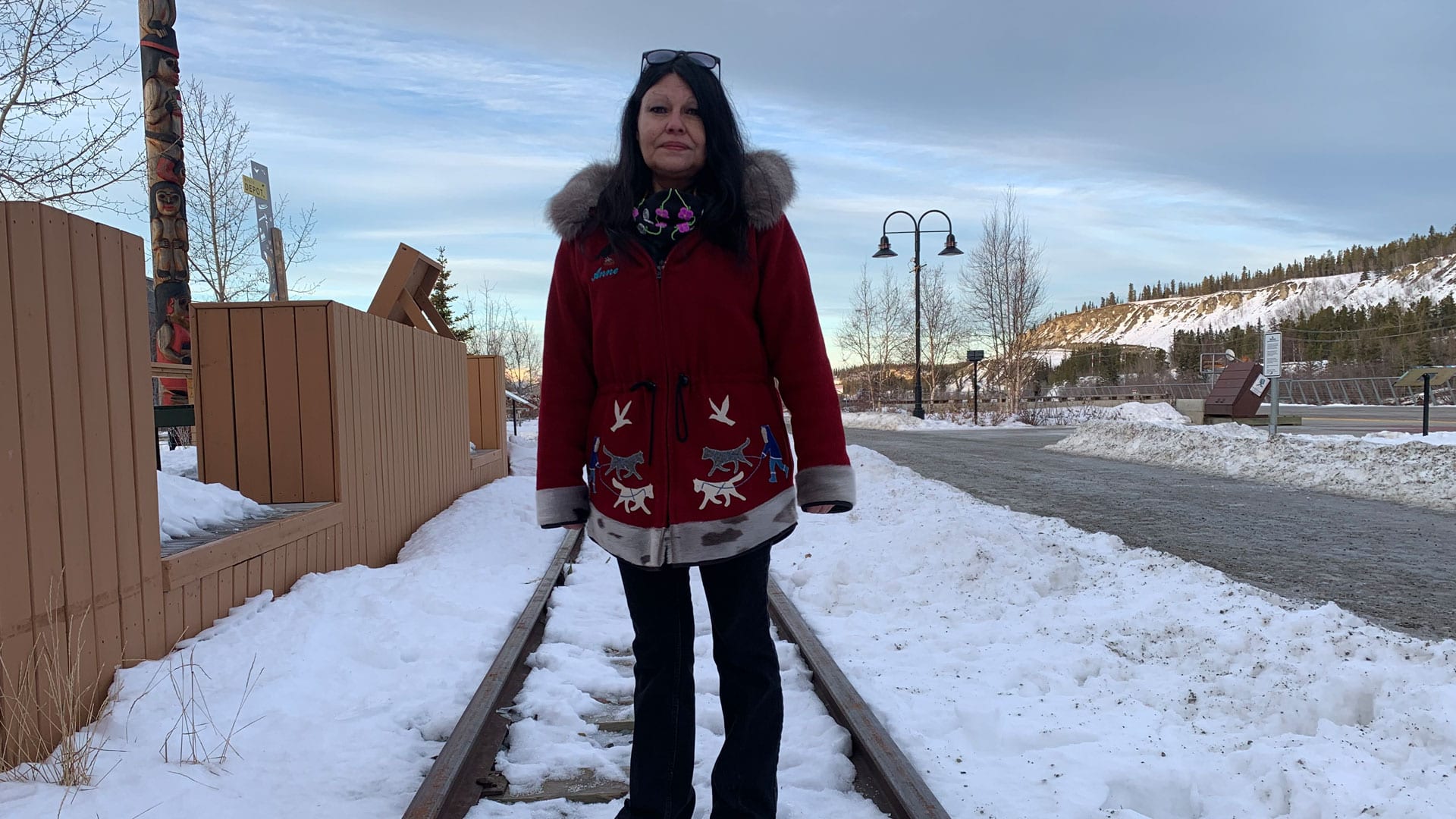Environmental advocates in the Yukon are criticizing a proposed $22 billion-dollar freight rail project that claims to be a state-of-the-art, low carbon rail line.
The Alaska-Alberta Railway Development Corporation, or A2A, is a private, 2,570-kilometre rail line that would transport commodities, containers, natural resources and passengers by 2025 according to the company.
The project would link Fort McMurray, Alta., to the Delta Junction in Alaska, where it will join with existing rail and continue on to deep ports near Anchorage.
Anne Mease, from the Yukon branch of the Canadian Parks and Wilderness Society, and who is also from Selkirk First Nation, said the rail line has the potential to cause major environmental damage to northern First Nation’s territory.
“The moose population will likely decrease. We don’t know how many waterways they’ll go through. I’d imagine they’d have to touch on the Yukon River, which will affect our salmon,” she told APTN News.
A2A claims that if the project is built, it will create 28,000 jobs by 2040 and bring in $60 billion to the country’s GDP.
Its website states the 24-hour a day operation “will apply the latest proven technologies in safety and efficiency to meet or exceed industry standards,” and will conduct a $100 million dollar environmental assessment before construction begins.
The company also says it will work in partnership with Indigenous communities, even offering 49 per cent equity for communities to encourage Indigenous ownership of the railway.
But Mease said there’s more problems with the railway than positives.
“We’re looking at unceded territory that hasn’t been dealt with through any kind of land claim or treaty process. It looks like it may go past or near Fort Selkirk, which is a designated heritage site,” she said.

Though the exact route of the A2A has yet to be determined, CPAWS Yukon suspects it might run through Ross River Dena Council and Liard and Little Salmon Carmacks First Nations, as well as Selkirk First Nation, where Mease is from.
“We have our culture that’s going to be affected by it the most,” she said. “We’re going to have to change our way of thinking to accommodate a project that is new to us.”
While a spokesperson for the Yukon government confirmed to APTN News through email that officials met with A2A representatives in 2019, Mease said she’s not aware of any consultation with First Nations, which she finds contrary to the company’s claims of thorough Indigenous consultation.

APTN reached out to the Yukon First Nations that may be affected by the rail line to see if they’ve been contacted by A2A.
Only Russel Blackjack, former chief of Little Salmon Carmacks First Nation, returned our request for comment, stating in an email release in September that council was aware of A2A and that the rail would “have a major impact on our settlement lands.”
Russell said he would ask for the topic to be put on the agenda at their general assembly in June of 2021.
John Curtis, who lives in the Yukon and has master’s degree in environmental policy, recently started a petition against the rail line which has over 370 signatures.
“The reason I started it was we need to cut oil and coal production by six per cent every year to keep the climate target, and that’s something that A2A has been really silent about in their recent promotional materials.”
Curtis says A2A is being deceitful, and that the line is actually a way to move oil while avoiding B.C. where there’s heavy resistance to pipelines.
“They’re looking at transporting up to two million barrels of oil a day, and no wonder they’re being silent about that. Yukon government declared a climate emergency and that would be a climate disaster.”
Despite A2A’s promises to reroute if Indigenous communities disapprove of the project, Curtis is skeptical.
“You can’t, there are First nations all throughout the Yukon and Northwest Territories. I don’t see how that would be possible.”
In September, A2A secured approval from outgoing President Donald Trump for construction in Alaska, though it still needs to get the proper licenses and permits through a U.S. review process.
It’s now in the consultation phase with Canadian stakeholders, which could take years to complete.
Alberta Premier Jason Kenney has applauded the project for its potential to open the province to new markets.
The project has to go through the federal government’s new environmental assessment process known as Bill C-69.
The law passed in June 2019 and changes the assessment process for major infrastructure projects in Canada including pipelines and railways.

Critics claim it discourages investment in oil and gas by making it difficult to approve major projects like pipelines.
It also demands consultation with Indigenous communities affected by any project.
Curtis says the project will likely face more uphill battles as it begins its consultation and review processes, and is doubtful it will get approval from the various entities it needs endorsement from.
“Design a different project. Design something that enhances renewable energy generation, that doesn’t have oil being tanked across Canada.”
Supporters say there are benefits
Regina-Wascana MP Michael Kram fully supports the project for its ability to connect landlocked Saskatchewan to more ports and international markets, as well as improve the transport of its major exports, like wheat, oil and potash.
“Anytime we can build either a pipeline, a railway or some other type of infrastructure to get goods moving, it’s always a good thing for the landlocked provinces.”
Kram sits on the House of Commons Transport, Infrastructure and Communities Committee, and has started his own petition to get approval of the A2A which he intends to present to the House next year.
Kram doesn’t know how many people have signed the petition so far, but says it had around 100 signatures a few weeks ago.
He is also hopeful the A2A will provide benefits to northerners, like providing additional rail line to N.W.T. which only has one line for the entire territory, as well as lowering the costs of some food stuffs which needs to be flown in.
The Conservative MP says another exciting benefit of the A2A is that the project estimates it will increase household incomes along its route by an average of 40 per cent in the long term.
“I would like to see this project move forward to the benefit of everybody,” he said.
But for Anne Mease, there’s no price tag high enough that can be put on the health of the land.
“For what the dollar is worth, the destruction is going to be three times that dollar.”
A2A did not return APTN’s repeated requests for comment.
But in a Nov. 12, 2020 news release, JP Gladu, president of A2A and former CEO of the Canadian Council on Aboriginal Business, said the project’s consultation process will be extensive.
“At no time in Canadian history have Indigenous people factored so prominently in the design and development of a major infrastructure project,” he said.
“The leadership of A2A Rail will define success equally by the achievements of our Indigenous partners as we do on standard commercial metrics.”










